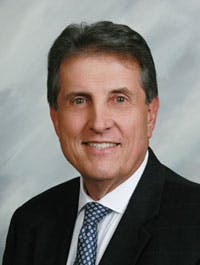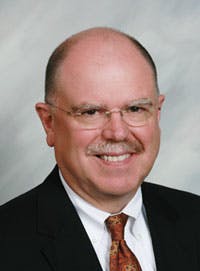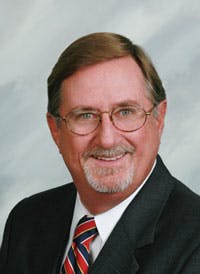Preng & Associates finding strategies to address the challenge
EDITOR'S NOTE: OGFJ recently spent some time with three Preng & Associates partners to discuss executive search and the looming talent shortage in the energy industry. The Houston-based firm specializes in energy placements.
OIL & GAS FINANCIAL JOURNAL: Before we begin, can you tell us what an executive search firm actually does and describe your specialization within the sector?
DAVID PRENG: Sure, Don. Preng & Associates assists energy corporations recruit board-level and executive talent. We act as trusted advisors and perform a process that objectively evaluates an individual's ability to perform and fit into our client's culture, strategy, and values. We've conducted more than 3,200 engagements for over 650 clients in more than 62 countries. And, perhaps most importantly to your audience, we specialize only in energy. Or as we say, everything from the wellhead to the wall sockets (upstream, midstream, downstream, oilfield equipment service, as well as power and utility).
OGFJ: Can you tell our readers a little about the history of Preng & Associates. How did you get started, and why energy?
DP: I started my career at Shell and this experience has helped me understand the needs and demands of our clients. Following my service with Shell, I worked with three other search firms — one local firm here in Houston, one of the big names, and the last was a UK-based firm where I managed their global energy practice. In 1980, the industry was booming and two clients encouraged me to start a firm. With an entrepreneurial streak like my dad, I bit the bullet and launched Preng & Associates.
And why energy? In our profession, you can't be successful unless you understand your client, their values, issues, challenges, organizational structure, products, services, position, and individual culture. Also, we are the first point of contact with a potential candidate and have a very short window to generate interest in our client's opportunity. To do so, we have to understand who we're calling, how to properly approach them, and be able to confidently answer the tough questions they ask. We have direct, hands-on energy experience and use this to benefit our clients.
OGFJ: I talk to a lot of people, and one of the main concerns I hear repeatedly is that there is a looming shortage of qualified personnel on all levels, from engineers and geoscientists to the C-suite. Why does this situation exist, and what is being done to address the crisis?
RALPH STEVENS: It's a serious problem. This is due to a lot of factors, one of which is the historical swings and roundabouts in the energy industry as it responds to global conditions. When we've laid people off in the past, we haven't quite kept up with the cyclicality when the industry comes back. So, young professionals coming out of college are choosing other, more stable industries for their careers. As a result, we sit with a good chunk of the workforce about to retire and we don't have the talent and expertise to replace them.
DP: To put this in perspective, in 1984, there were 32 universities that offered petroleum engineering degrees. Starting in the mid-'80s, with $10 oil, curriculums were not popular, enrollment dried up, and this lasted for over 20 years. As late as 2008, only 17 universities offered degrees in petroleum engineering. If you add up all of the petroleum engineers that graduated from all 17 universities in 2008, the total number was 600. So, yes we agree people have become our industry's greatest shortage and a major challenge for everyone.
OGFJ: So it sounds like a lot of competition for qualified people?
CHARLES CARPENTER: That's correct, Don. We just haven't done a great job of convincing young professionals to join the energy industry. A lot of fathers and grandfathers that started their careers in the oil and gas business tell their kids and grandkids not to touch the oil and gas industry with a ten-foot pole. They are told that we don't take care of our own and that when the numbers go south, employers start laying people off. I don't think that's unique to the energy industry, but we really have a reputation for that kind of cyclicality and therefore it's difficult to attract young professionals.
But we're working hard to change that perception. We know that today's oil and gas companies are spending time and effort to recruit and attract leaders. And we're investing more of our resources to continually ensure prosperous long-term commitments when a qualified candidate starts working for our client.
OGFJ: So what is the industry doing to attract new leaders?
CC: One of the things we've seen in recent years is creative recruiting exercises. We're trying to reverse the historical trend of a bad reputation for our industry in terms of not caring about our people. There are a number of professional organizations in the industry that are supportive of and sponsor these initiatives. They create desire among individuals who want to join these curriculums. There's an organization called the Petroleum Equipment Suppliers Organization that has created a specialized high school in Houston that is totally energy focused. We know and understand that we're all in this together, and long-term commitments foster long-term opportunities and growth.
OGFJ: What about board of directors placements? Is Preng involved at the board level and what trends are you seeing there?
DP: Our board practice has increased due to several internal and external factors. Externally, there's been an evolution in the board room. Before Enron, the directors were people you knew, people you played golf with, or went to church with. Post Sarbanes-Oxley, the initial reaction was to recruit "the professional director" who knew the rules. However, boards and shareholders are now realizing that they need members who know the industry to oversee strategy and direction as well as the regulations. Today, boards often have to go beyond their network to find the best candidates. They appreciate that outside professionals, such as ourselves, bring both an expanded network and objectivity to help evaluate talent and enhance governance.
Internally, we've conducted board searches for more than 20 years and, combining this expertise with our network and my 30 years of public board experience, we offer a unique value proposition. We have the access to quality talent for the board room and we know how to evaluate them.
OGFJ: From your perspective, have you ever witnessed a time when activist investors have been able to weigh-in as much as they have on board selection and executive replacements? Chesapeake is an example that comes to mind.
DP: Dodd-Frank really opened up corporate scrutiny where shareholders now have the opportunity to have a say on pay, director nominations, and other items. This has given what people call the "activist shareholder" more power. Additionally, there is the ability for these investors to accumulate more capital and take a larger stake, which allows them certain rights when approaching the company. We saw this happen this past year with Hess, SandRidge, and others where they went after boards and executives and, in the majority of cases, sought to improve company performance, not just for a quick sale.
OGFJ: So how long does the typical executive search actually take? Could you walk us through an example from engagement to placement?
RS: To start, it's all about the industry and the client. And while every engagement is different, we generally follow a similar process. First, we conduct a detailed review of the required technical skills, personal skills, and leadership skills for the position. We then develop detailed position specifications. Once we get past the approval of these specifications by the client, it usually takes three to four weeks before we present the first candidate. During that time, we're doing our research, the initial screening, and personal interviews — in general just representing the company.
Then we reach the second phase where the client begins the interview process and that's usually dictated by the time schedules of both the candidate and the client. But, we try to get that done in another three to four weeks. Reference checking, offer negotiations, and so on can last another two to four weeks. So a typical search should take approximately eight to 12 weeks if all goes well. Having said that, we've conducted searches in as short a time as 30 days to as long as six months.
OGFJ: What are the top questions you believe every company should ask an executive search firm prior to engagement?
RS: First and foremost — I want to know who will actually be representing my company to the potential candidates. I'd ask: Who will actually be doing the work? Next, I'd want to know what their qualifications were to see if, in fact, they knew about my industry. A client should want to know how much you know about their business specifically. I would like to know whether the person doing the work has the time to focus on my search and what companies are "off-limits" to the search firm.
OGFJ: How do you get to know each particular company and their needs?
CC: It's important to remember we are energy experts. We make it our business to keep up with what's going on with the industry. That's part of our job here and we take it very seriously. So we do a lot of research in order to keep up. When we do have a face-to-face meeting with a client, we spend a significant amount of time talking to as many stakeholders as we can so we can get a feel for the individual culture of a certain company. It's not that easy to go out on the Internet and find information that says exactly what the company culture is. You really have to have interface with people in that company.
OGFJ: So where do you see the executive search industry as well as Preng in the next few years?
DP: We work in an evolving industry. A few years ago everyone was talking about "peak oil." Now we're talking about energy independence and net exports. All this, however, is the result of hard-working, smart, and dedicated people and companies. And it's our job, and everyone's job, to continue to attract well-qualified people to the industry. At our firm, we are executing a three-year strategic plan that focuses on enhancing our service to our clients. We're improving our processes and technology as well as working on implementing a major step change that will greatly improve the search process' productivity and deliverability.
OGFJ: Thanks very much for your time.



